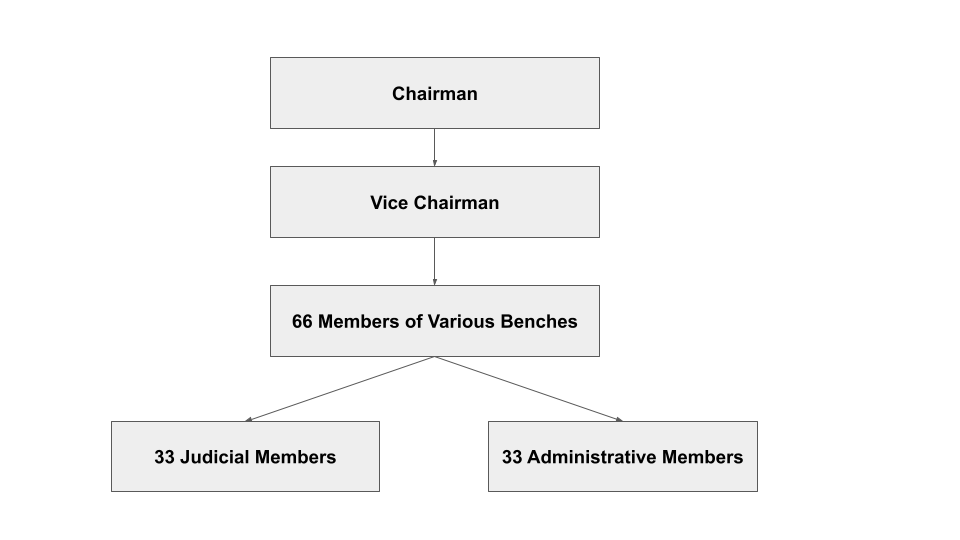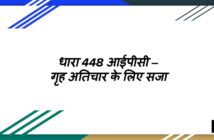WHAT CONSTITUTES CENTRAL ADMINISTRATIVE TRIBUNAL?
The Central Administrative Tribunal deals with disputes and complaint’s relating to recruitment and conditions of service of people engaged in the affairs of the Union or other authorities under the control of the Government, whether they are involved in public service or any other post. In this article, we will discuss what the Central Administrative Tribunal does, the Central Administrative Tribunal characteristics, and the members of the Central Administrative Tribunal.
What Does Central Administrative Tribunal Do?
Central Administrative Tribunal has been set up under the provisions of Article 323-A of the Constitution of India for the purpose of:
- Adjudication of compliant and dispute resolution
- Reducing the burden of the courts
- Giving them ample time to deal with other cases expeditiously
- Provide speedy relief for the grievances of the people under the Administrative Tribunal Act, 1985
How many Tribunals are there?
There are three Tribunals, namely
- Central Administrative Tribunal
- State Administrative Tribunal
- Joint Administrative Tribunal
Who Are the Members of the Central Administrative Tribunal?

- 1 Chairman
- 1 Vice Chairman
- 66 Members of Various Benches
- 33 Judicial Members
- 33 Administrative Members
Composition of Central Administrative Tribunal
Central Administrative Tribunal is comprised of a Chairman, Vice-Chairman, and other members appointed by the President. The service tenure is 5 years or until the age of 68 years for the Chairman and Vice-Chairman and 65 years for members. The CAT can submit its resignation to the President before the tenure expires.
What are the Characteristics of the Central Administrative Tribunal?
- All the cases of High Court and Sub-ordinate Courts are transferred to the Central Administrative Tribunal under Section 29 of the Arbitration of Tribunal Act, 1985, for speedy and inexpensive disposal of cases.
- It works on the principle of natural justice in deciding the case and is not bound by any ordinary courts’ technicality or procedure.
- The jurisdiction of Central Administrative Tribunal is limited to the relationship of service matters of the parties covered under the Act namely; members of any All-India Service, a person appointed to any civil service of the Union or any civil post under the Union, a civilian appointed to any defence services or a post connected with defence (except members of defence forces, officers, the staff of the Supreme Court and the secretarial staff of the Parliament are not covered under the jurisdiction of Central Administrative Tribunal).
- The Central Administrative Tribunal has the power to frame its own rules of procedure and practice.
Section 17 of the Administrative Tribunal Act, 1985, the Tribunal has the same power and authority as a High Court for its contempt. - The employees of the Central Administrative Tribunal discharge their duty under the supervision of the Chairman. The Central Government specifies the salaries and allowance of the officers and employees of the Tribunal.
- The Central Administrative Tribunal has introduced the new plan for modernization and computerization of its activities, through which lawyers, researchers, litigants, and the public can access the orders and judgment of the Tribunal through its website and get case information online.
What Remedies Can Be Sought Through Central Administrative Tribunal?
The Central Administrative Tribunal entertains an application only if it is satisfied that the grieved person has exhausted all other available remedies available to him/her under the relevant service rules to redress its grievances. However, if the Tribunal is not satisfied, it can reject the application after recording its reason. And if the Tribunal rejects an application, no appeal in relation to that subject matter will be entertained in future. This was clear from the following case law
Satyendra Kumar Singh, Additional Commissioner of Customs & Excise V. Union of India through Secretary (Revenue), Ministry of Finance & Others
In this case, the Applicant is aggrieved because his juniors got promoted as Commissioner on an ad hoc basis, while he has been denied this promotion. The Applicant had made a representation to the Tribunal and CBEC as he feared that his pending inquiries might impact his promotion. It was held that there was no charge sheet issued against the Applicant, and the charge memo was issue eight months after the promotion of his juniors. Therefore, the Applicant can be promoted along with his batchmates and would also be entitled to receive consequential benefits.
It was further held that the Tribunal should not admit an application if it is not satisfied that the aggrieved person has availed all the available remedies under the relevant service rules for redressal of grievances.
Nevertheless, the Tribunal shall not admit an application where
- The Government has made a final order or competent authority, rejecting the preferred appeal or representation made in connection with the grievances, provided the application has been made within one year from the date of such final order.
- No final order has been made for a period of six months by the Government or competent authority, provided the application has been made within one year from the date of expiry of the said six months.
Execution of Orders of a Tribunal
Any order passed by the Tribunal for disposing of an application or an appeal shall be final, binding, and shall not be challenged in any court, including High Court.
Can Central Administrative Tribunal’s judgment be challenged before the High Court?
Yes, the Tribunal order can be challenged by way of Writ Petition under Article 226/227 of the Constitution before the High Court in whose jurisdiction the bench of Tribunal is situated. The aggrieved person can issue a Writ of Certiorari on the ground that
- The Tribunal has erroneously refused to admit any material evidence or has admitted inadmissible evidence erroneously, which has influenced the finding of the court,
- Where the Tribunal has acted against the principle of natural justice, or
- Where the Tribunal has decided without jurisdiction.
However, mere ground that the decision is wrong does entail the person to invoke a writ petition under Article 227. The supervisory jurisdiction conferred on the High Court ensures that the Tribunal functions within the jurisdiction and, there is no miscarriage of justice.
How do you file a complaint in Central Administrative Tribunal?
All the disputes arising out of suspension, appointment, non-appointment, transfer dismissal, promotion, increment, charge sheet, etc. are filed before the Central Administrative Tribunal. The petition so filed is called OA.
This OA has to be filed in a proper format with copies of all the necessary documents and court fees.
One can file an application under section 19 of the Administrative Tribunal Act, 1985 in the following manner:
- Stating the particulars and the details of the order against which the OA is being filed,
- Grounds of relief being sought,
- Also state that other remedies have been sought or representation has been made regarding the grievances’ subject matter. The person has not filed an application, suit, or writ petition, or any suit, proceedings, or writ petition is pending before any court or competent authority.
- If the Applicant has filed a suit or petition before any court or competent authority, one should mention the stage at which it is pending. If it has been decided, the decision has to be attached to such application.
Conclusion
Central Administrative Tribunal was established under the provisions of Article 323-A to adjudicate the disputes and complaints in relation to the recruitment and conditions of service of people engaged in the affairs of the authorities under the control of the Government,
for the speedy redressal of grievances. The judgement of the Administrative Tribunal can be challenged before the High Court through a Writ Petition. Any order passed by the Tribunal is effective and binding on all the parties.

